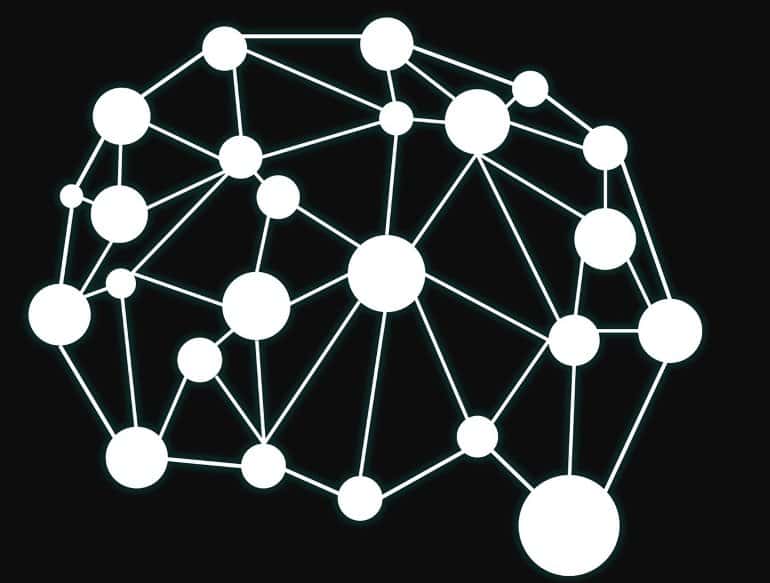Summary: The cognitive map allows people to compute on the fly with limited information to solve abstract problems.
Source: UC Davis
How do we make decisions about a situation we have not encountered before? New work from the Center for Mind and Brain at the University of California, Davis, shows that we can solve abstract problems in the same way that we can find a novel route between two known locations — by using an internal cognitive map.
The work is published Aug. 31 in the journal Nature Neuroscience.
Humans and animals have a great ability to solve novel problems by generalizing from existing knowledge and inferring new solutions from limited data. This is much harder to achieve with artificial intelligence.
Animals (including humans) navigate by creating a representative map of the outside world in their head as they move around. Once we know two locations are close to each other, we can infer that there is a shortcut between them even if we haven’t been there. These maps make use of a network of “grid cells” and “place cells” in parts of the brain.
In earlier work, Professor Erie Boorman, postdoctoral researcher Seongmin (Alex) Park, Douglas Miller and colleagues showed that human volunteers could construct a similar cognitive map for abstract information. The volunteers were given limited information about people in a two-dimensional social network, ranked by relative competence and popularity. The researchers found that the volunteers could mentally reconstruct this network, represented as a grid, without seeing the original.
The new work takes the research further by testing if people can actually use such a map to find the answers to novel problems.
Matchmaking entrepreneurs
As before, volunteers learned about 16 people they were told were entrepreneurs, ranked on axes of competence and popularity. They never saw the complete grid, only comparisons between pairs.
They were then asked to select business partners for individual entrepreneurs that would maximize growth potential for a business they started together. The assumption was that an entrepreneur scoring high in competence but low on popularity would be complemented by one with a higher popularity score.
“For example, would Mark Zuckerberg be better off collaborating with Bill Gates or Richard Branson?” Boorman said. (The actual experiment did not use real people.)
While the volunteers were performing the decision task, the researchers scanned their brains with functional magnetic resonance imaging, or fMRI.
If the volunteers were using the grid cells inside their head to infer the answer, that should be measurable with a tailored analysis approach applied to the fMRI signal, Boorman said.

“It turns out the system in the brain does show the signature of these trajectories being computed on the fly,” he said. “It looks like they are leveraging the cognitive map.”
Computing solutions on the fly
In other words, we can take in loosely connected or fragmentary information, assemble it into a mental map, and use it to infer solutions to new problems.
Scientists have considered that the brain makes decisions by computing the value of each choice into a common currency, which allows them to be compared in a single dimension, Park said. For example, people might typically choose wine A over wine B based on price, but we know that our preference can be changed by the food you will pair with the wine.
“Our study suggests that the human brain does not have a wine list with fixed values, but locates wines in an abstract multidimensional space, which allows for computing new decision values flexibly according to the current demand,” he said.
The cognitive map allows for computation on the fly with limited information, Boorman said.
“It’s useful when the decisions are novel,” he said. “It’s a totally new framework for understanding decision making.”
The navigational map in rodents is located in the entorhinal cortex, an “early” part of the brain. The cognitive map in humans expands into other parts of the brain including the prefrontal cortex and posterior medial cortex. These brain areas are part of the default mode network, a large “always on” brain network involved in autobiographical memory, imagination, planning and the theory of mind.
Funding: The work was supported by the National Science Foundation and National Institutes of Health.
About this cognition research news
Author: Andy Fell
Source: UC Davis
Contact: Andy Fell – UC Davis
Image: The image is in the public domain
Original Research: Closed access.
“Inferences on a multidimensional social hierarchy use a grid-like code” by Seongmin A. Park, Douglas S. Miller & Erie D. Boorman. Nature Neuroscience
Abstract
Inferences on a multidimensional social hierarchy use a grid-like code
Generalizing experiences to guide decision-making in novel situations is a hallmark of flexible behavior. Cognitive maps of an environment or task can theoretically afford such flexibility, but direct evidence has proven elusive.
In this study, we found that discretely sampled abstract relationships between entities in an unseen two-dimensional social hierarchy are reconstructed into a unitary two-dimensional cognitive map in the hippocampus and entorhinal cortex.
We further show that humans use a grid-like code in entorhinal cortex and medial prefrontal cortex for inferred direct trajectories between entities in the reconstructed abstract space during discrete decisions. These grid-like representations in the entorhinal cortex are associated with decision value computations in the medial prefrontal cortex and temporoparietal junction.
Collectively, these findings show that grid-like representations are used by the human brain to infer novel solutions, even in abstract and discrete problems, and suggest a general mechanism underpinning flexible decision-making and generalization.






